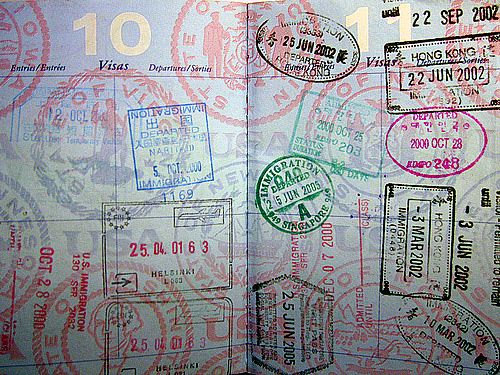[Note: This is a guest post by James M. McCormick of Iowa State University and is the third post on the Duck Forum on Teaching US Foreign Policy]
“Teaching American Foreign Policy in the 21st Century” by James M. McCormick, Iowa State University
In teaching the American foreign policy making course over the past several decades, I have always had three major goals. First, I want students to become familiar with the values and beliefs that have influenced and shaped American foreign policy from its beginning to the present, albeit with a particular emphasis since World War II. Second, I expect students to identify and analyze the principal governmental and non-governmental actors that shape America’s foreign policy choices, and how the role of those actors has changed over time. Third, I expect students to develop a sufficient conceptual framework so that they are prepared to analyze the role and issues facing the United States in the future. In essence, I adopt a “continuous learner” model toward teaching the course, since my ultimate aim is to equip students with sufficient information and analytic tools to assess future foreign policy questions, long after the class is finished.
As these goals imply, I take a distinctly domestic focus in teaching American foreign policy as does my text, American Foreign Policy and Process (6th ed., Cengage, 2014). Indeed, the basic organizing theme throughout the text, although especially in Part I, is to assess how American values and beliefs have shaped U.S. foreign policy choices over the history of the Republic. To drive this domestic focus home (and to challenge the realist foreign policy model), I often start the semester by using a variant of Tip O’Neill’s maxim (“all politics is local”). Instead, I assert that “all foreign policy is domestic politics.” To be sure, that statement contains considerable hyperbole, but I want my students to think about how crucial domestic politics/factors are in shaping ultimate foreign policy choices. The recent controversy over Syria among President Obama, Congress, and the public is only the latest example of the crucial role of domestic factors as the proximate causes in shaping a foreign policy response—even if the ultimate cause is external. In all, my text and approach to the course largely fit within the neo-classical realist approach to international politics, but I also make use of traditional foreign policy approaches—rational actor, organizational process, bureaucratic politics, and constructivism—to explain America’s actions abroad.
To address the first goal, Part I (Chapters 1-6) of the text discusses and interprets American foreign policy actions from the founding of the Republic through the Obama administration by using values and beliefs as the crucial lens for understanding them. These analyses range from discussions of isolationism, moral principles, and American exceptionalism at the outset of the Republic and the impact of Wilsonian idealism in the early 20th century to the effects of the Cold War Consensus on American foreign policy after World War II. Similarly, after the experience of the Vietnam War, differing values, beliefs, and assumptions about foreign policy of the Nixon, Ford, Carter, Reagan and George H.W. Bush administrations resulted in oscillations in American actions abroad for several decades. With the end of the Cold War, the Clinton administration, too, sought to bring a new direction to foreign policy based upon liberal internationalist principles. Similarly, the George W. Bush administration embraced realist and neo-conservative values after 9/11 and took actions largely in accord with those beliefs. Finally, the Obama administration reacted to the approach of the previous eight years and has sought to adopt its own direction in light of its belief system.
To address the second goal, Part II (Chapter 7-12) of the text examines the different governmental—the president, the Congress, and the various bureaucracies— and non-governmental—political parties, interest groups, media, and public opinion—actors, the role that each plays, and the values that each seeks to promote in the foreign policy process. The text is aided at this juncture (and really throughout the course) with case analyses of the behavior of these different actors, assigned from my edited book, The Domestic Sources of American Foreign Policy (6th ed., Rowman & Littlefield, 2012). Such analyses provide much more flavor and currency to the course and the institutions than the text alone can provide.
To address the third goal, Part III (Chapter 13) discusses, albeit in truncated form, some alternative futures for American foreign policy actions—a primacy role for the United States, a multilateral approach to the world, or a retrenchment model—in light of what students have learned in the course. As such, the students are invited to take away one or a combination of these models for the future.
The tests and the paper assignment focus on these goals, too. My tests are a combination of multiple choice, short answers, and an essay question. The few multiple choice items (about a third of the test) are interpretative ones on the arguments in the course. Similarly, the short answer and essay questions specifically call for assessing and comparing the differing values and beliefs during particular time periods (Part I) and the roles and functions of the decision makers (Part II). Finally, I require students to complete a paper comparing and contrasting two journal articles dealing with foreign policy. There are multiple aims with this assignment: (1) engage the students in writing; (2) require them to read more widely about foreign policy; (2) familiarize them with foreign policy journals for the future; and (3) develop their analytic skills by linking the course materials to current policy debates in the articles.
Jon Western has spent the last fifteen years teaching IR in liberal arts colleges at Mount Holyoke College and the Five Colleges in western Massachusetts. He has an eclectic range of intellectual interests but often writes on international security, U.S. foreign policy, military intervention, and human rights. He occasionally shares his thoughts about professional life in liberal arts colleges. In his spare time he coaches middle school soccer, mentors the local high school robotics team, skis, and sails.



==“all foreign policy is domestic politics.”==
Bush commissioned a study of the muslim world. And the Defense Science Board discovered just that:
“Muslims see Americans as strangely narcissistic — namely, that the war is all about us. As the Muslims see it, everything about the war is — for Americans — really no more than an extension of American domestic politics and its great game. This perception is of course necessarily heightened by election-year atmospherics, but nonetheless sustains their impression that when Americans talk to Muslims they are really just talking to themselves.”
https://www.acq.osd.mil/dsb/reports/ADA428770.pdf
==“all foreign policy is domestic politics.”==
Bush commissioned a study of the muslim world. And the Defense Science Board discovered just that:
“Muslims see Americans as strangely narcissistic — namely, that the war is all about us. As the Muslims see it, everything about the war is — for Americans — really no more than an extension of American domestic politics and its great game. This perception is of course necessarily heightened by election-year atmospherics, but nonetheless sustains their impression that when Americans talk to Muslims they are really just talking to themselves.”
https://www.acq.osd.mil/dsb/reports/ADA428770.pdf